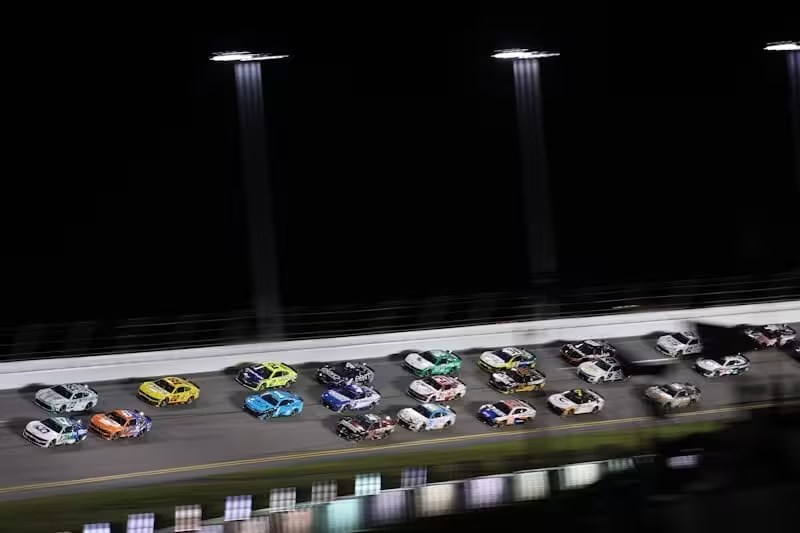Harrison Burton delivered Wood Brothers Racing its milestone 100th victory and locked himself into the NASCAR Cup Series playoffs with a last-lap pass to win the Coke Zero Sugar 400 at Daytona International Speedway on Saturday, Aug. 24.
As is often the case at superspeedways, the action on track played a much bigger role in the outcome than pit road. But that does not mean there was a lack of strategy at The World Center of Racing, particularly when it comes to fuel.
Fuel Games in Full Swing
Season-long readers of this column will recall the emphasis put on fuel savings during the Daytona 500 back in February. At one point, the pack was running as slow as 54-second laps under green during that race.
The pace was not as slow on Saturday, but fuel conservation was still very much on the minds of all the teams up and down pit road.
The opening stage was 35 laps, shorter than a fuel run, so it was not until the 60-lap-long stage two that fuel savings came into play.
Early in stage two, the main pack of cars slowed down by an average of one second per lap as drivers sought to minimize the time needed to fill their fuel tanks on the next pit stop.
On lap 61, the initial calm turned to chaos when Corey LaJoie got into the back of Noah Gragson, triggering a chain reaction that led to the first Big One of the night. Denny Hamlin was among the drivers caught up in the melee, and the driver of the No. 11 Joe Gibbs Racing Toyota speculated that the fuel conservation may have played a part in bringing about the wreck.
“You know, there was definitely some fuel saving going on, which allowed some cars to be more aggressive if they wanted some track position,” Hamlin said. “It was just a combination of some people wanted to go and some people didn’t.”
The amount of fuel in the car and the length of time needed to fill the tank were both key variables that crew chiefs took into account to maximize track position.
For example, on lap 85, about half the field pitted for fuel while the other half stayed out. For the group that pitted, this led to a big gain in track position under the end-of-stage-two caution on lap 99 because they needed less time to fuel the car.
Drivers who benefited from this strategy include eventual runner-up finisher Kyle Busch and Justin Haley, who parlayed the position boost into 21 laps led. Haley ultimately wound up wrecking…
Click Here to Read the Full Original Article at …

